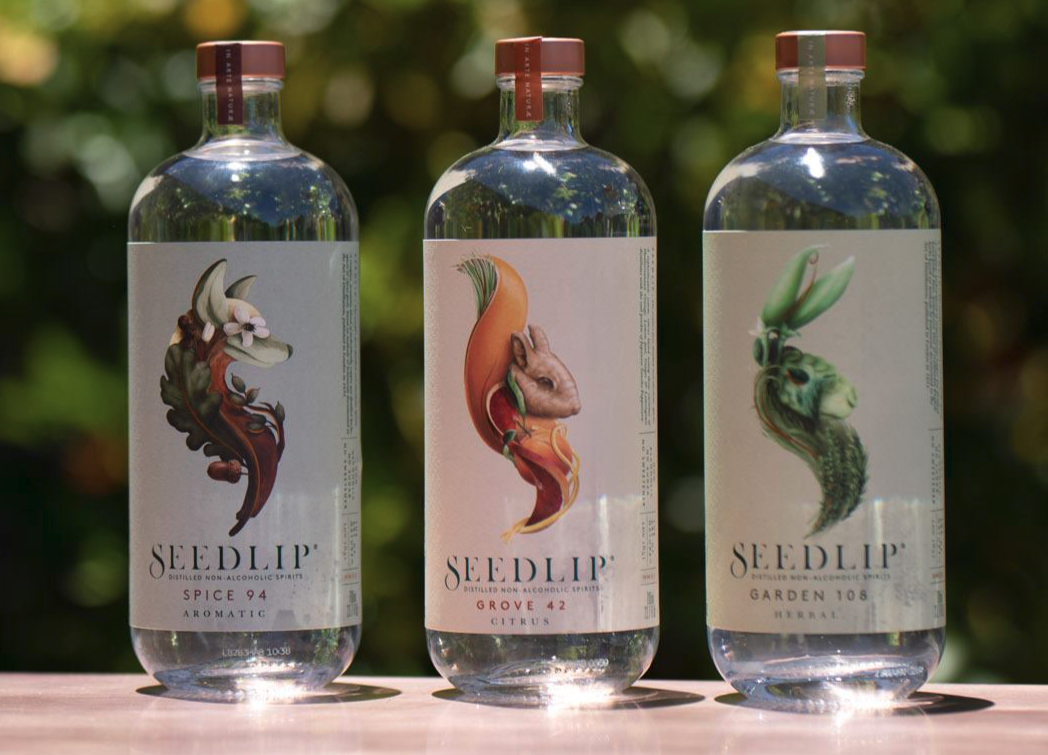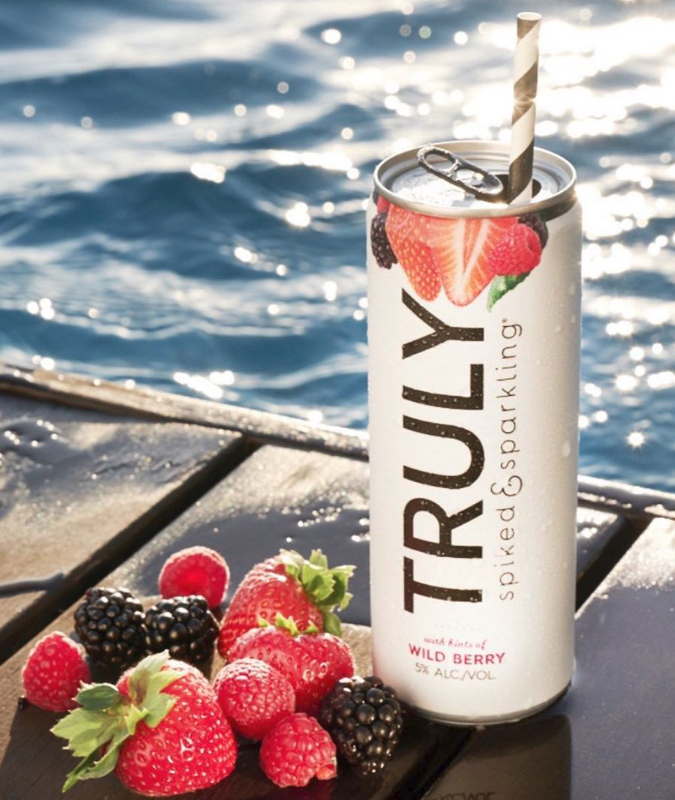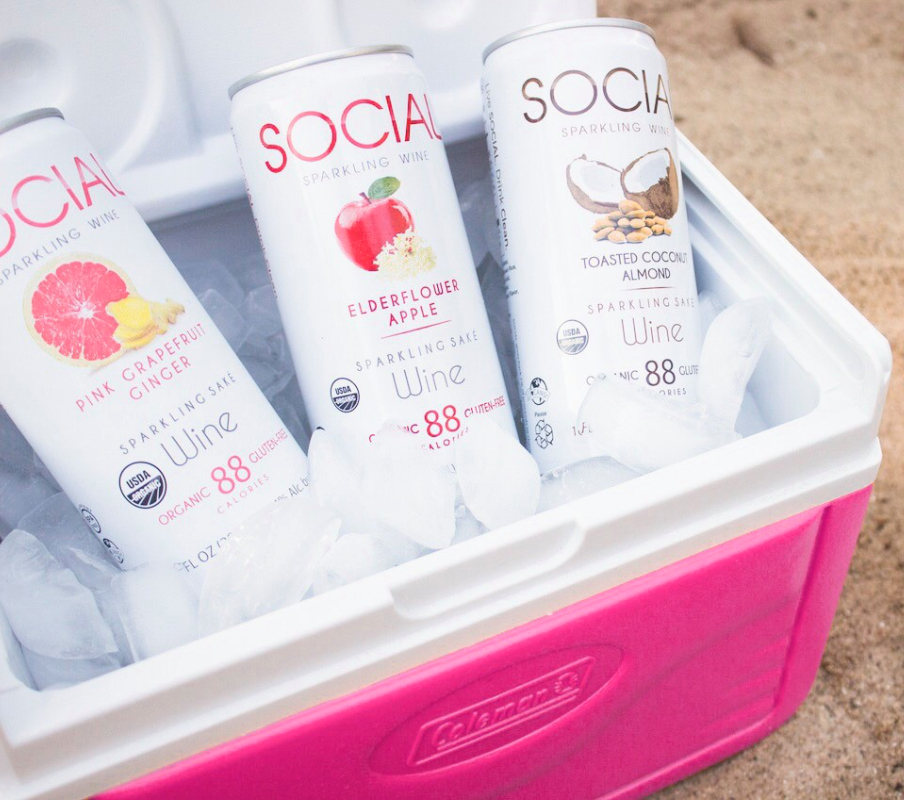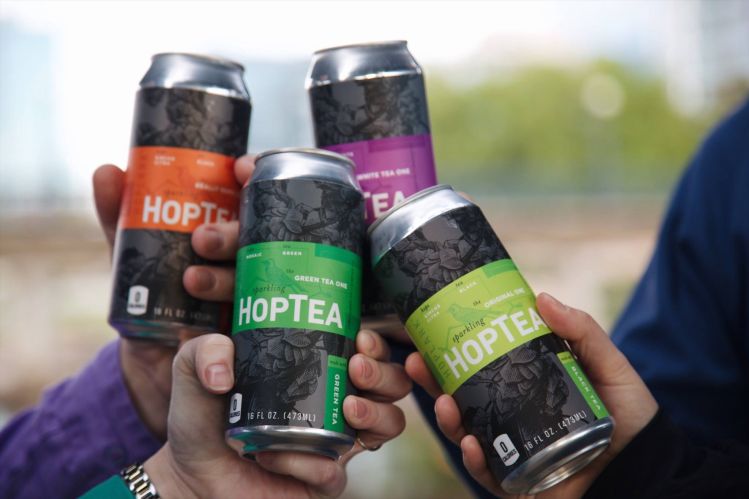CHICAGO — Craft cocktails on the lighter side — that’s what the no- and low-alcohol better-for-you beverage movement is about. These are spirited beverages that may be consumed without fear of a hangover the following day. Often lower in calories, mocktails and “lighter” adult-only beverages are being shaken up by bartenders to serve patrons who are losing interest in drinking to get drunk but want to explore sophisticated, often exotic-flavored beverages in a social setting. The beverages also are appearing in ready-to-drink, single-serve formats that provide convenience and portion control.
“The adventurous, indulgent nature of alcohol-inspired flavors resonates well with consumers as it brings a new and fun everyday experience,” said Nina Riggins, senior marketing manager — beverage, Kerry, Beloit, Wis. “Bringing new taste experiences through the drama and inventiveness of the mixology world, alcohol-inspired flavors are evolving to new categories across non-alcoholic beverages, from waters to herbal teas.
“As consumers push to partake in the alcoholic social occasions without consuming actual alcohol, we see an increased presence of spirit-free, cocktail-inspired options. Using the inclusion of flavors such as smoke, bitterness, herbs and botanicals, consumers can enjoy the occasion that is traditionally associated with alcohol, without actually consuming.”
Kimpton Hotels and Restaurants, San Francisco, recognizes that cocktails do not need alcohol to be interesting. In its fifth annual Culinary + Cocktail Trend Forecast survey, inventive craft mocktails were identified as a menu attraction. These are elevated options with nuanced flavor and layers of complexity. The mocktails give the option to imbibe no matter what your stance is on alcohol, said Scott Gingerich, senior vice-president of restaurants and bars.
“Virgin cocktails are more inspired and complex than ever before thanks to new non-alcoholic spirits like Seedlip, house-made syrups and tonics and the use of fermented ingredients,” Mr. Gingerich said.
Seedlip is a distilled non-alcoholic spirit, solving the ever-growing dilemma of “what to drink when you’re not drinking,” a registered slogan of the company founded by British farmer Ben Branson in 2015 in The Chilterns, England. Seedlip contains no sugar, sweeteners or calories. It is designed to be served with tonics or in non-alcoholic cocktails.
“We want to change the way the world drinks,” Mr. Branson said.
The brand made its debut with Spice 94, an aromatic blend of bark, spice and citrus distillates. Garden 108 has green and floral notes created through individual copper pot distillates including peas and common herbs, including spearmint, rosemary and thyme. The most recent offering is Grove 42, which is a celebration of the orange, according to the company. It is an adult, citrus blend of copper-pot distillates including bitter orange, mandarin, blood orange, lemongrass, ginger and lemon.
“Seedlip is a game-changing brand in one of the most exciting categories in our industry,” said John Kennedy, president — Europe, Turkey and India at Diageo, which acquired a majority stake in Seedlip in August.
While non-alcoholic craft beverages are a growing business, low-alcohol beverages are gaining traction, too. This is particularly true in the R-.T-.D. single-serve segment.
Flavored alcoholic seltzers are booming right now, Mr. Gingerich said. Sixty-three per cent of bartenders are considering using a flavored alcoholic seltzer with either a seasonal fruit puree, herbal garnish or splash of citrus for a light and refreshing drink.
This easily translates to a R-.T-.D. concept and is part of the range of the growing category of adult-centric refreshments dubbed “new school alcohol.” Many make such label claims as less sugar, gluten-free and lower calories.
 Truly Spiked & Sparkling from Hard Seltzer Beverage Company L.L.C., an affiliate of the Boston Beer Co., Boston, is a forerunner in this category. It is a spiked sparkling water with a hint of fruit. With 100 calories, 1 gram of sugar and 5% alcohol by volume, Truly Spiked & Sparkling is formulated with simple ingredients and contains alcohol made from cane sugar.
Truly Spiked & Sparkling from Hard Seltzer Beverage Company L.L.C., an affiliate of the Boston Beer Co., Boston, is a forerunner in this category. It is a spiked sparkling water with a hint of fruit. With 100 calories, 1 gram of sugar and 5% alcohol by volume, Truly Spiked & Sparkling is formulated with simple ingredients and contains alcohol made from cane sugar.
Building on its history of innovation, Oskar Blues Brewery, Longmont, Colo., now offers Wild Basin Boozy Sparkling Water. The hard seltzer carries the tagline “Keep running wild,” which speaks to active lifestyle consumers who value the outdoors, socializing with friends and healthier living.
In terms of nutritional credentials, Wild Basin (5% alcohol by volume) contains 100 calories with zero grams of sugar and only 1 gram of carbohydrates. Additionally, the hard sparkling water has a clean label positioning. From a flavor standpoint, Wild Basin takes a contemporary approach with profiles that are designed to resonate with younger drinkers who seek new, culinary combinations. Flavors include classic lime, cucumber peach, lemon agave hibiscus and melon basil.
Another spin on wine is Social Sparkling Wine from the namesake Chicago-based company. This is a twist to the wine cooler of the 1980s. It is described as a sparkling sake wine, as its alcohol base is made from fermented brown rice. The reason the company uses brown rice instead of grapes is to have a sulfite-free, low-calorie and flavor-neutral alcohol base. The 4%-alcohol-by-volume wines come in 10-oz slim cans and contain 88 calories. Flavor varieties include elderflower apple, hibiscus cucumber, pink grapefruit ginger, strawberry rose and toasted coconut almond.
“There is a sober-curious movement that is a natural outflow of plant-based eating and lifestyle diets,” said Lori Smith, creative director, ZoomEssence, Hebron, Ky. “The idea is that you can get a ‘buzz’ by eating and drinking in a more conscious way.
“We are seeing more apothecary-like flavor combinations appearing in R.-T.-D. beverages. These sort of new-age, health-infused natural flavors incorporate herbs, citrus and edible florals.”
A challenge in formulating many no- and low-alcohol beverages is compensating for the sweetness that many of the traditional cocktails possess with the use of fruit juices and simple syrup.
 “Sugar plays a part in how the flavor is perceived,” said Holly Mason, senior applications manager, ZoomEssence. “This can be overcome by the use of high-intensity artificial or natural sweeteners, along with various gums or texturizing agents to provide mouthfeel. Sweetness enhancers may assist with imparting more sugar-like sweetness.”
“Sugar plays a part in how the flavor is perceived,” said Holly Mason, senior applications manager, ZoomEssence. “This can be overcome by the use of high-intensity artificial or natural sweeteners, along with various gums or texturizing agents to provide mouthfeel. Sweetness enhancers may assist with imparting more sugar-like sweetness.”
Low-alcohol and malt beverages tend to need a boost in different spirit notes to better mimic traditional cocktails. The processing of the R-.T-.D. beverages creates challenges, too.
“Beverage processing, such as heat treatment, tends to reduce the overall flavor profile in the final beverage,” said Joshua Jackson, application technologist, Sensient Flavors, Hoffman Estates, Ill. “Depending on the type of flavor used and the base of the application, the amount of flavor lost can be a significant change to a minor shift. Flavorists can work to mitigate this problem by adjusting the solvent system to increase the flavor’s flashpoint and minimize the flavor’s sensitivity to processing.
“In the case of malt beverages, spirit flavors are a way to provide those characteristic alcohol notes without needing to include any hard alcohol in the beverage formulation.”
Spirit flavors may serve multiple purposes in applications that already contain an alcoholic ingredient.
“These types of flavors can extend the taste effect and create the illusion of more spirit than is actually present in a product,” said Bill Aslanides, senior flavor chemist, Synergy Flavors Inc., Wauconda, Ill.
 In the non-alcoholic space, spirit flavors may add back many of the alcoholic notes that naturally exist in spirits. They are designed to do this without the ethyl alcohol content of the true spirit.
In the non-alcoholic space, spirit flavors may add back many of the alcoholic notes that naturally exist in spirits. They are designed to do this without the ethyl alcohol content of the true spirit.
“A hop essence or beer flavor, for example, can be used in low-alcohol beer to impart the floral, piney and tropical notes of different hop species or the malted barley notes that are used during the production of, not only all beers, but especially those of the craft style IPA beers that have become such a strong force in the beer market,” Mr. Aslanides said. “Wine flavors can be used to not only mimic the alcoholic portion of wine, but especially to accentuate the flavor characteristics of specific varietals of wine grapes. Whether it be the fruity profile of a rose or zinfandel, the woodiness of a merlot or the strong floral notes of a muscat, flavors can be tailored to deliver a broad range of character to an application in need of a boosted profile, without the delivery of the alcohol portion.”
Spirit flavors typically are comprised of a variety of lower molecular weight alcohols, esters and aldehydes. The compounds are exceptionally volatile and sensitive to heat processing.




